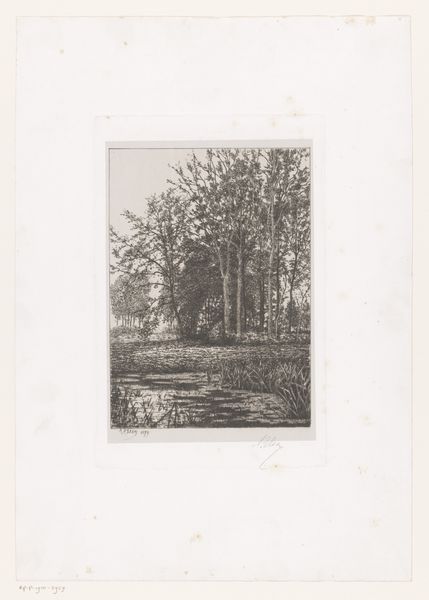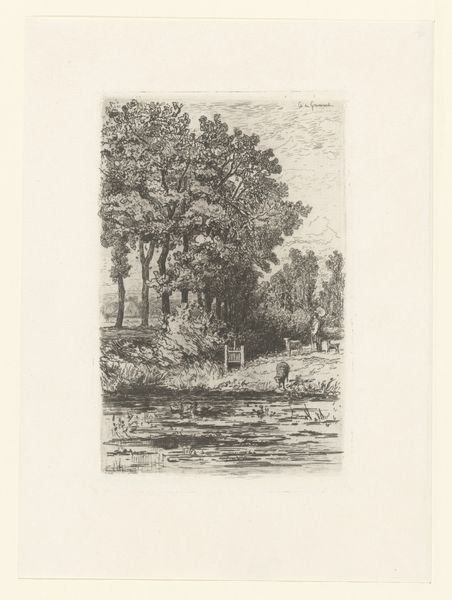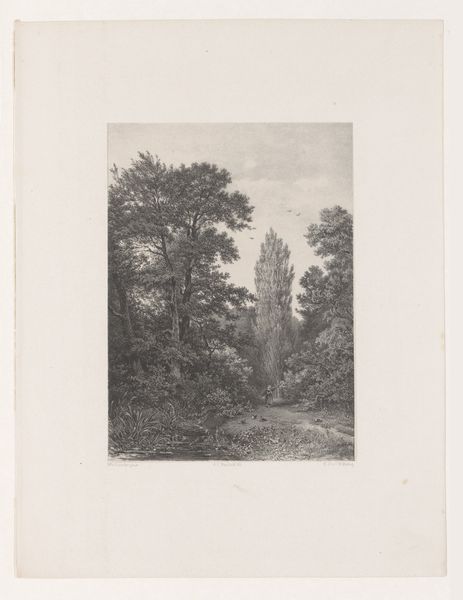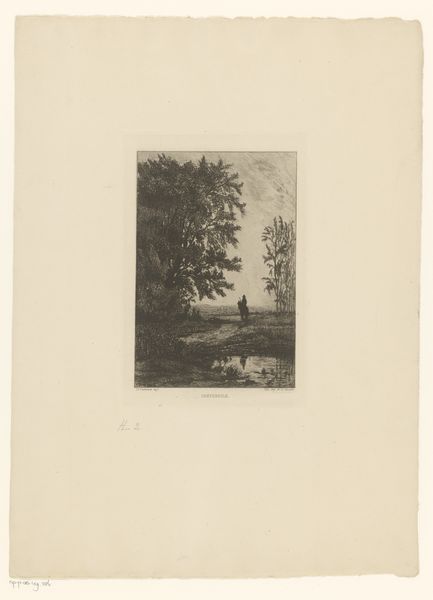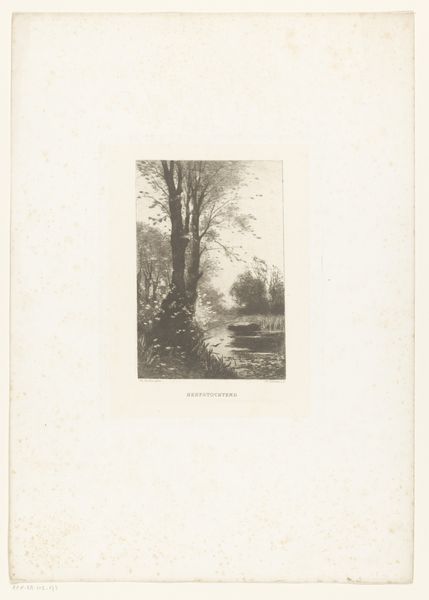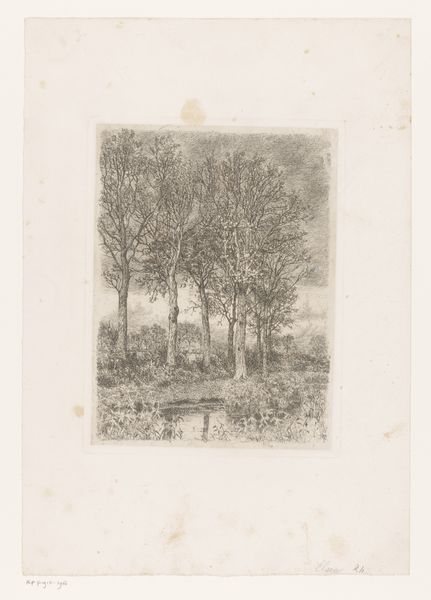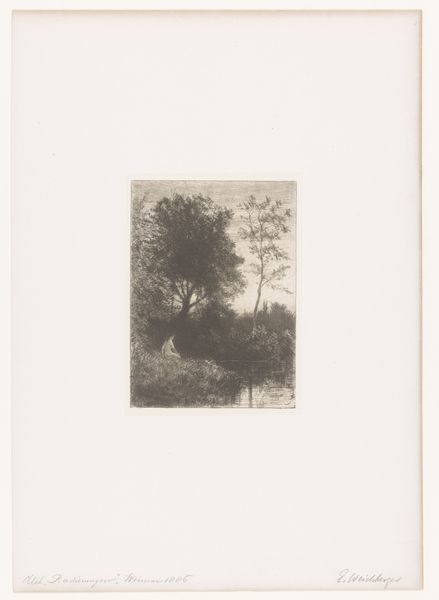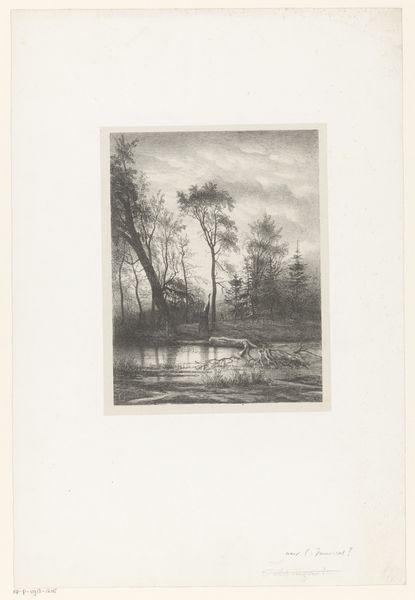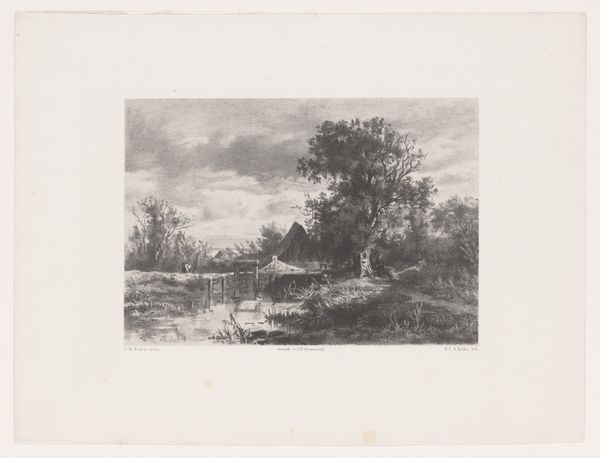
etching
#
organic
#
impressionism
#
organic shape
#
etching
#
landscape
Dimensions: height 200 mm, width 148 mm
Copyright: Rijks Museum: Open Domain
Alfred Elsen created this landscape with a stream in the foreground as an etching. The image encapsulates the broader artistic and cultural context of landscape art in the late 19th century, particularly its role within institutions like the Rijksmuseum. Elsen uses the etching technique to create a sense of depth and texture, inviting the viewer into this rural scene. Made in the Netherlands, the artwork reflects a culture deeply connected to its natural environment. The Dutch landscape tradition, influenced by the country’s geography and economic dependence on agriculture and waterways, often served as a form of national identity. Museums and art academies played a crucial role in shaping this tradition, promoting certain styles and themes. The artwork speaks to the prevailing social and political ideals of its time. It presents an idealized view of nature, subtly reinforcing conservative values tied to land ownership and rural life. However, such images could also critique the rapid industrialization of the time. By studying exhibition records, art criticism, and artists' biographies, we can better understand the intentions and reception of works like this. The meaning of art is always contingent on its social and institutional context.
Comments
No comments
Be the first to comment and join the conversation on the ultimate creative platform.

